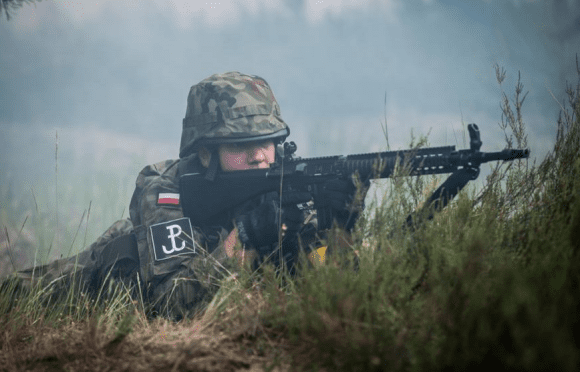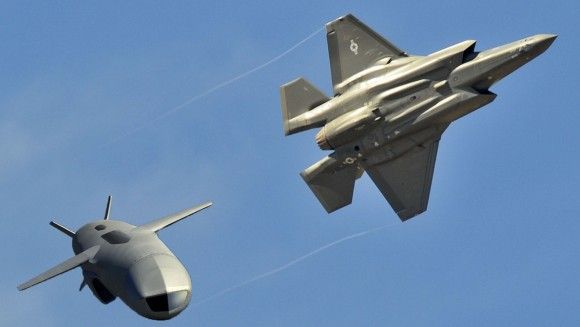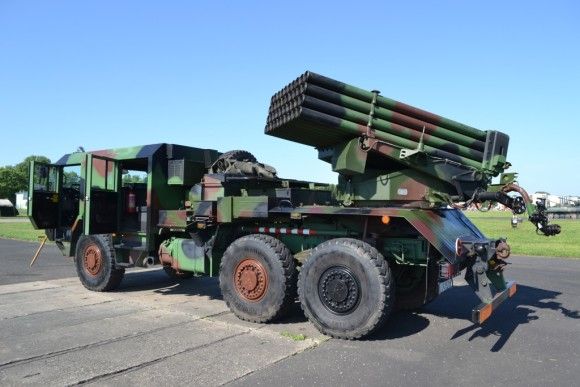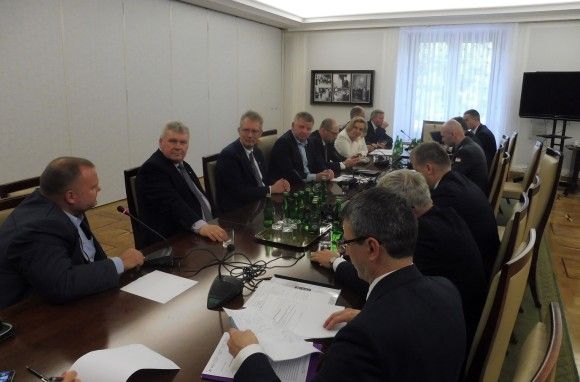„A Freedom Of Maneuver for the Air Force”. AARGM as a Reponse to the IADS
AARGM was specifically designed to counter the threat IADS thus enabling allied freedom of maneuver – as Mike Stuart, Weapons and Advanced Programs Business Development Director, Orbital ATK, has stated in an interview with Defence24.pl.
Jakub Palowski: Orbital ATK is presenting the Advanced Anti-Radiation Guided Missile to the Polish Armed Forces as a potential solution to their Anti-Access/Aria Denial (A2/AD) problem. This will most likely be place on their F-16 fighter aircraft. What are, in your opinion, the most important features of AARGM, taking into account the Central European threat environment, including the use of the advanced A2/AD and Integrated Air Defence Systems by the Russian Federation?
Mike Stuart, Weapons and Advanced Programs Business Development Director, Orbital ATK: The most significant feature of AARGM is the ability to counter Integrated Air Defense Systems or IADS. IADS are the foundation of enemy Anti-Access/Area Denial (A2/AD) capability. This strategic threat is designed to deny or take away the much needed freedom of maneuver required to successfully employ air power. This can be accomplished to defend the own airspace and extend deep into their adversaries airspace. Freedom of maneuver is a key strategic ability to apply force accordingly to meet and defeat the enemy.
In the case of threat IADS, they are directly focused on preventing freedom of maneuver for all air assets including but not limited to airplanes and cruise missiles. AARGM was specifically designed to counter the threat IADS thus enabling allied freedom of maneuver.
The technology to allow AARGM to engage the threat IADS includes a digital Anti-Radiation Homing (ARH) seeker system that locates and identifies IAD threat locations. This seeker, coupled with a digital terrain data base enables the ability to provide the navigation system a location to fly to even when the IADS turns off their radar.
AARGM’s end game terminal seeker, or Mili-Meter Wave (MMW) radar, is designed to counter this “shut down” (radar off) environment. In the terminal stage of flight, the MMW radar scans the known target area of the established GPS position. The MMW radar looks for surface to air radars, missile launchers and IADS support equipment.
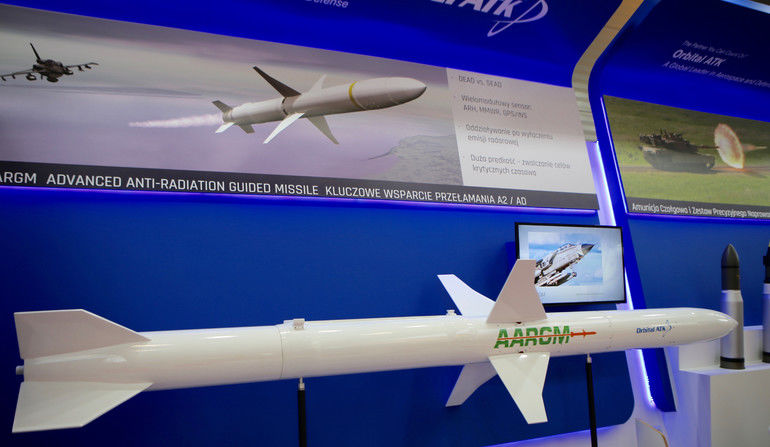
AARGM is capable not only of engaging air defence or radar systems, but also other targets including time sensitive targets.
These time sensitive taregts may also include a high valued asset location. AARGMs high speed capability provides allied forces the ability to engage time sensitive targets with a larger warhead from longer range and faster than any other current system.
Poland has also recently purchased long-range AGM-158A/B JASSM/JASSMER air to ground systems. How AARGM could fit within a “weapon mix” of the Polish F-16, that is to include other systems like JASSM?
AARGM is a force multiplier or enabler of the JASSM system to penetrate the adversaries IAD airspace. By taking out the IADS, this essentially opens the door for all air platforms including missiles, to maneuver freely.
The Polish MoD puts an emphasis on local industry participation, within the armament purchase projects. To what extent could the Polish industry take part in the AARGM project, either within manufacturing, or lifecycle maintenance of the missiles?
Those options will need to be worked out between the Poland MOD and the US Government/US Navy. Currently AARGM is in full rate production. Adding additional suppliers for the missile will increase the current price curves upward. Other options as you mentioned include lifecycle maintenance of the missile. A final solution will depend on defined requirements from Poland and the approval from the US Government/US Navy.
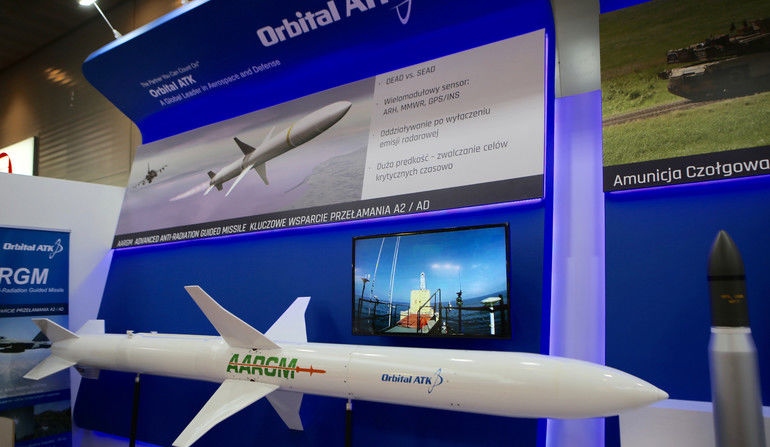
AARGM is a missile system recently adopted by the US Navy and the USMC. Efforts are ongoing to integrate it in the Italian Tornado aircraft, as well as to field the more advanced versions. How would you assess the present state of the AARGM programme, and what are the most important near-term plans, regarding the system itself?
AARGM is a very healthy and growing programme. AARGM’s Full Rate Prodcution 6 contract is nearly final.. The most important near term Orbital ATK plans include meeting our contractual obligations for AARGM deliveries. Other near term plans include working with the USN to build a system that will meet threats being developed in the future. This effort is defined by the USN as the AARGM Extended Range (ER) program estimated to be completed for the USN in the 2023/24 time frame.
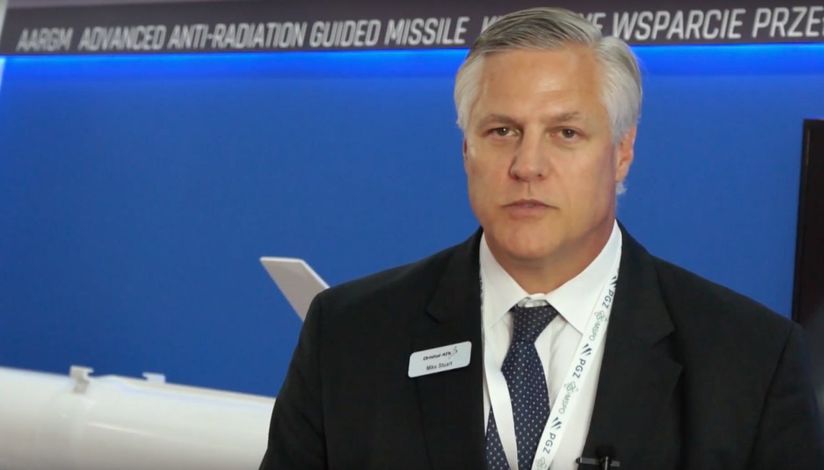
In the past year we have learned that the Ministry of Defense of Germany plans to purchase the AARGM missile, a Foreign Military Sales contract was also signed by Australia. What are potential other export markets for the AARGM? Do you think that it could become a commonly used system, within a significant group of NATO countries?
As a policy, Orbital ATK does not speculate on other potential export markets. We do see that the threat continues to grow creating an increased need for all Allied air forces wanting freedom of maneuver. Much like AMRAAM has enabled freedom of maneuver against the air threat, we fully see AARGM playing this significant role in the IADS / Surface to Air Missile threat environment.
Recently a concept of the new generation AARGM-ER missile has been revealed. It is understood that it will have substantially longer range, and it will be able to be carried by the F-35 fighter aircraft in the internal weapon bays. What are other major features of the AARGM-ER concept?
The current Orbital ATK AARGM-ER design concept aligns with what the USN addresses in their FY18 Budget Documents:
- Upgraded propulsion and tail-control for increased range, speed and altitude
- Affordable reuse of existing state-of-the-art AARGM sensors, radome and avionics package
- Thermal sleeve, strakes, and airframe support extended range and survivability requirements
- Compatible with F/A-18E/F, EA-18G and F-35A/C internal carriage
- Reutilization of the existing warhead from AGM-88B/C HARM
To what extent does the Orbital ATK AARGM-ER design concept take into account the evolution of the threat environment, including the increased number of long-range highly-capable SAM systems, that are being fielded by the potential adversaries?
The Orbital ATK design concept focuses on the threat as the primary driver for the desired increased capability. Key to all tactical air forces is the ability to maneuver freely. As the threats obtain more range, the counter to those threats also require increased range.
The United States Air Force has recently launched the new Stand-in-Attack Weapon project, aimed at obtaining the capability of conducting effective precision strikes against a high-value well-defended targets. Do you think that the AARGM-ER might be offered or used within the SiAW project?
Orbital ATK is not able to respond to this scenario at this time. Suffice it to say, we are closely monitoring the USAF program.
F-35 is set to equip a number of European Air Forces, including the RAF and the Italian Air Force. Do you think that, in the more distant future, those countries could decide to purchase AARGM?
We certainly feel that once AARGM-ER is integrated into the internal F- 35 weapons bays that other F-35 customers will align with this mission are to secure freedom of maneuver for the allied forces.
Thank you for the conversation.

